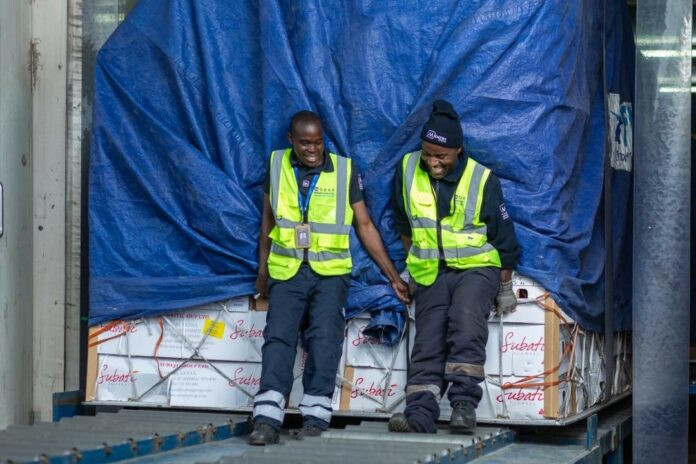

Transporting flowers and plants requires careful handling due to their delicate nature. Across the global network, cargo handlers are needed to provide end-to-end flower transportation services, with specialist cold storage to maintain strict temperature management and cold chain integrity.
To deliver for customers, Menzies Aviation operates across a number of major hubs for the import and export of flowers; including Jomo Kenyatta International Airport (NBO) in Nairobi, Amsterdam Airport Schiphol (AMS) in the Netherlands, and José María Córdova International Airport (MDE) in Colombia.
“Key export markets include Europe, the Middle East, Far East and South Africa, with the Netherlands, Ecuador, Colombia, Kenya, and Ethiopia identified among the largest growers of cut flowers. At times of peak demand, our teams are even sending flowers as far as Australia!,” Beau Paine, Global Head of Cargo, Menzies Aviation, said.
READ: Menzies Aviation and SGA Angola agree joint venture
Care in the air
As with any perishable goods, flowers are time and temperature sensitive. They require fast and safe delivery to maintain their quality. Fresh-cut flowers, in particular, have a short shelf life, and while this makes them ideal for air cargo transportation, they require specific transportation conditions from refrigerated coolers, specialised packaging and more. This makes the maintenance of the cold chain and minimising the loading/offloading during freight connections essential.
“Getting the packaging right not only protects the fragility of the product, but also allows sufficient cold air circulation to maintain quality and freshness,” Paine highlighted. “Packaging is also key to meeting the standards expected by the markets we export to, such as the European Union.”
Another global challenge is the economic backdrop. Higher prices have naturally followed an increase in production costs driven by inflation, and this has led to a decline in consumer demand. This, combined with increasing freight costs caused by capacity challenges on certain trade routes, has put pressure on the sector.
“Volume and capacity have certainly been impacted by freight prices,” Paine explained. “Rising inflation and capacity constraints are without a doubt among the key challenges currently impacting the flower transportation sector.
“As a result of these economic factors, customers are prioritising value for money, often pushing carriers to operate in high yield routes, such as China.
“We’ve seen a move towards sourcing products from regions geographically closer to the market in question, thereby reducing freight cost.,” Paine continued.
READ: Menzies Aviation strengthen its presence in Asia
Competitive market
There have been three notable changes in the flower transportation segment in recent years: Firstly, sea freight has grown significantly, and this competition has led cargo handlers to drive up standards and improve the service that they offer to customers. Secondly, the focus on improving sustainability has had a big impact on what cargo handlers do, and how they do it. For example, the use of environmentally friendly containers has become the norm. Finally, there has been a dramatic shift from manual to digital solutions across the entire supply chain, with processing times and general efficiency increasing as a result.
“Airfreight will continue to play a key role in the flower transportation sector, with a focus on delivering high-quality, safe and sustainable services,” Paine stated. “The cut flower industry has grown significantly, and so has the need to reduce the environmental impact of transporting perishable goods, at refrigerated temperatures, across the globe.
“We operate in an immensely competitive market, so achieving the very highest standards across our operations is essential to optimising future growth,” Paine added.










